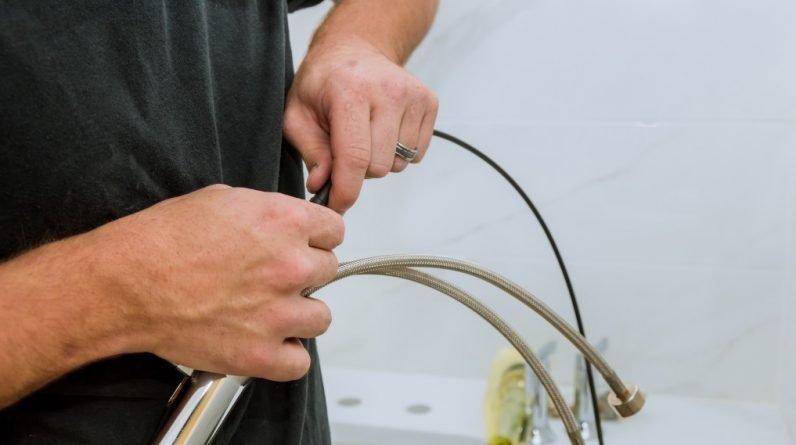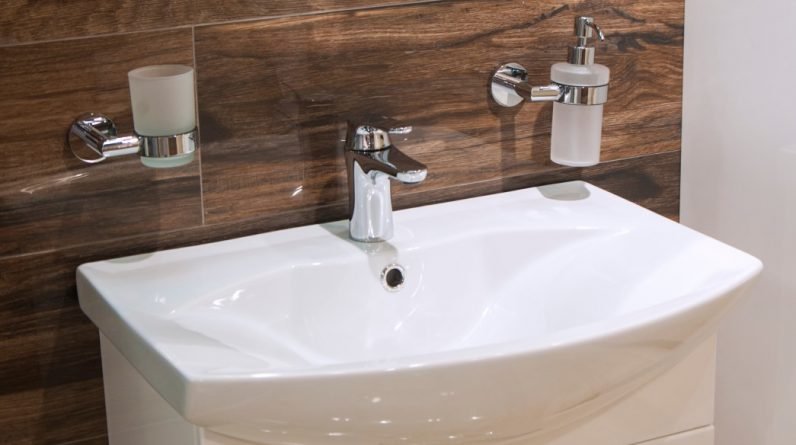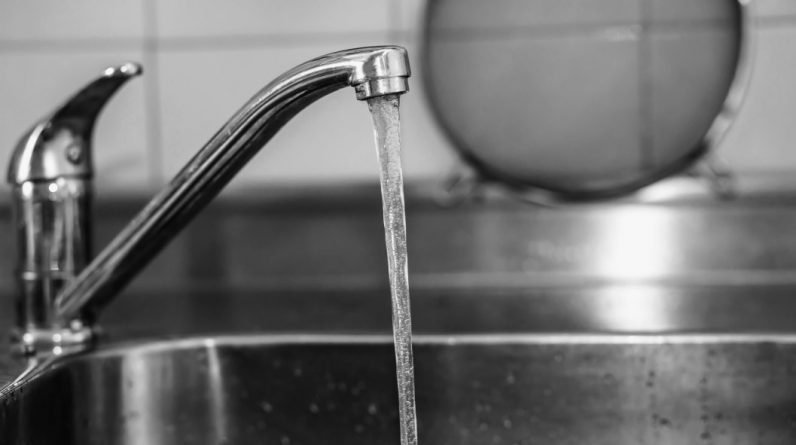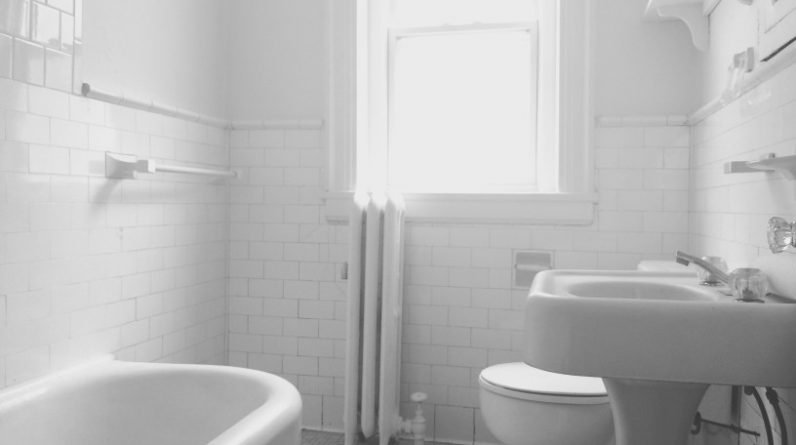
Types Of Plumbing Parts
Plumbing is a complex system of parts and pieces, all designed to work together in order to make our lives easier. From sinks and toilets to pipes and valves, general plumbing parts are the backbone of any successful installation. But what exactly are these components? In this article, we’ll explore the different types of general plumbing parts and how they fit into your home’s overall setup.
From copper piping to supply lines and waste disposers, each type of part has an important role in keeping water flowing safely through your house. We’ll look at the basic components that go into making up a complete plumbing system, as well as specialized items like traps and connectors that can help you get more out of your fixtures. Finally, we’ll discuss the common materials used in modern systems so you know what will best suit your needs.
So if you’re looking for some insight on general plumbing parts or just want to brush up on your knowledge before tackling a project yourself, join us as we dive head-first into the world of residential plumbing!
## 1. Plumbing Pipes
Plumbing pipes are essential in any plumbing system. They connect fixtures like sinks, showers, and toilets to the water supply while also serving as a drainage network for wastewater. Without them, it would be impossible to install these crucial components of modern homes and buildings. The most common types of plumbing pipes include copper, PVC, PEX, CPVC, ABS, cast iron, galvanized steel and lead.
Copper is the most popular choice for home plumbing systems due to its durability and longevity. It’s resistant to rusting and corrosion, making it ideal for both hot and cold water applications. Copper can also be soldered together using special techniques which make installation easier than with other pipe materials such as PVC or PEX.
PVC is another option that many plumbers use when installing new piping systems since it is much less expensive than copper but still offers good performance properties. Its strength makes it suitable for high pressure applications while its flexibility allows it to fit into tight spaces where other pipes cannot go easily. Additionally, PVC is easy to cut so customizing lengths is simple compared to metal pipes like copper or galvanized steel which must be purchased in specific sizes from stores or manufacturers.
Overall, there are several options available when selecting the right type of plumbing pipe depending on your application needs and budget constraints. From durable metals like copper to cost-effective plastics like PVC – each material has unique characteristics that should be considered before purchasing supplies for a project.
## 2. Fittings And Connectors
Fittings and connectors are essential parts of a plumbing system. They provide secure connections between pipes, valves, drain lines and other components. There are many types of fittings and connectors available to suit different requirements – from basic straight couplings to specialty check valves. Some common examples include slip nuts, compression fittings, flanges, unions and tees.
Slip nuts allow for quick connection or disconnection of two pieces of pipe without the need for tools. Compression fittings use a nut and ferrule that compress the tubing when tightened, creating a watertight seal with no soldering required. Flanges connect sections of pipe together with bolts and gaskets providing superior strength against pressure changes in flow rate or temperature fluctuations in the line. Unions create removable joints so that you can easily replace faulty components and tees split one incoming line into two outgoing lines.
No matter what type is used, fitting and connector installations must be done correctly to ensure safe operation and prevent leaks over time. It’s important to select the right size fitting or connector based on the diameter of the pipe it will attach too as well as its chemical compatibility with the fluid being carried through it; using incorrect parts could cause damage or blockage down the road which would be costly to repair. All-in-all they are an invaluable part of any plumbing setup necessary for long lasting performance at home or in commercial buildings alike.
## 3. Valves
Valves are an essential part of any plumbing system. They control the flow of water and prevent backflow, ensuring that your home is safe from flooding and contamination. There are several types of valves used in general plumbing parts: gate valves, ball valves, check valves, pressure-reducing valves, and butterfly valves. Each type has its own purpose and use case.
Gate Valves provide a complete shut off for a system due to their wedge shaped discs. These are ideal for controlling larger volumes of water or gas; however, they can be difficult to operate if not installed properly. Ball Valves offer quick shutoff with minimal effort due to their spherical shape which allows them to open or close quickly when turned. Check Valves allow liquid movement only in one direction and are commonly found in sump pumps or other low pressure lines. Pressure Reducing Valves maintain consistent pressure throughout a system by automatically adjusting the rate of flow based on the amount of incoming pressure it senses. Butterfly Valves are well suited for regulating large amounts of high velocity fluid as they require very little maintenance while providing tight shut-off capabilities.
No matter what type you need, all these valve components should be inspected regularly to ensure proper operation and safety within your plumbing system. It’s important that each component is sized correctly for the application it will be used for as this will help increase efficiency and reduce wear over time.
## 4. Water Pressure Regulators
Regulators. They are key in the plumbing system; they control water pressure so that it is not too high or too low for fixtures, appliances and pipes. High-pressure can cause damage to these components over time, while low pressure can leave them unable to function properly.
These devices work by controlling the amount of water travelling through a pipe at any given time. When connected correctly, regulators monitor changes in water flow and adjust accordingly – decreasing or increasing the level of pressure as needed. This ensures that whatever comes out of your faucet has consistent force.
The importance of having one cannot be overstated; without it you may end up with burst pipes due to excessive water pressure or inefficient functioning throughout the house due to lack thereof. It’s worth investing in a quality regulator if you want your home’s plumbing system running smoothly.
It pays dividends down the line, ensuring proper performance from all aspects related to your home’s supply lines and keeping things running efficiently with minimal maintenance required on your part.
## 5. Drain Pipes And Traps
Drain pipes and traps are essential parts of a plumbing system. They move wastewater away from the home so that it can be properly disposed of. These items provide an important function for both residential and commercial properties alike.
Pipes come in several different materials, such as PVC, copper, or cast iron. Traps are usually made out of plastic or metal, though some may also be made from other materials like wood. The size and shape of each pipe will depend on its purpose – waste water needs to be able to flow freely through them without any blockages occurring.
No matter what type is chosen, regular maintenance should still be carried out to ensure they remain free from clogs and debris buildup. This includes checking for leaks or signs of wear and tear on a regular basis, as well as using chemical cleaners to help keep the inside clean. Taking these steps can save time and money in the long run by preventing costly repairs down the road due to neglected maintenance issues.
Keeping drain pipes and traps functioning correctly is critical for keeping homes safe and hygienic; neglecting this aspect of plumbing could lead to serious problems if not addressed promptly.
## 6. Plumbing Fixtures
Plumbing fixtures are the parts of a plumbing system that transport water for specific purposes. These types of general plumbing parts include sinks, showers, faucets, toilets, and other items people use to access clean water. The installation of these fixtures requires precise measurements and careful attention to detail.
Fixtures come in different shapes and sizes depending on their purpose and function. A sink is typically larger than a shower head but smaller than a toilet bowl, while a faucet can range from small handheld varieties to large spouts attached to the wall. Each type also has its own unique features such as handles or levers used to control the flow of water.
Different materials are often used for each item based on factors like durability and cost effectiveness. For example, stainless steel is often chosen for sinks because it’s long-lasting and resistant to corrosion, whereas plastic might be better suited for a showerhead due to its lightweight nature and affordability. Regardless of what material is selected though, all fixtures must meet certain safety standards before being installed in any home or business setting.
Installing plumbing fixtures correctly is an important part of maintaining functional systems with reliable access to clean water. It takes skillful planning and execution by experienced professionals who understand how all the pieces fit together to ensure everything works properly.
## 7. Water Heaters
Water heaters are an essential part of any plumbing system. They provide hot water for bathing, washing dishes and laundry, as well as providing hot water for sinks and showers. In order to ensure that your water heater is working properly, it is important to understand the different types available.
The two main types of water heaters are tankless and storage tank models. Tankless water heaters use a heating element to warm up the incoming cold water before storing it in a holding tank or other container. These systems are generally more energy efficient than their storage tank counterparts since they do not have to store large amounts of heated water at all times. However, they require larger upfront costs due to their more complex installation process.
Storage tanks on the other hand hold a large volume of pre-heated water in one location, making them ideal for households with higher demand for hot water usage such as multiple bathrooms and/or high-volume dishwashers and clothes washers. Storage tanks can also be powered by electricity, gas, solar power or some combination thereof depending on the specific needs of the household or business.
No matter which type you choose, proper maintenance should always be followed to keep your unit running smoothly throughout its lifetime. Regularly draining the tank annually helps prevent sediment buildup and reduces corrosion over time; checking thermostat settings periodically ensures accurate temperature control; inspecting pipes regularly protects against leaks; replacing old valves keeps pressure levels safe; and having annual inspections done by a licensed plumber will help identify potential problems early on so repairs can be made quickly if needed. Taking these steps will help extend the life expectancy of your unit while keeping your family safe from potential hazards associated with outdated technology or poor maintenance practices.
## 8. Toilets And Bidets
Toilets and bidets are essential plumbing parts. They come in many different shapes, sizes, and styles. Toilets can be installed over the floor or wall-mounted depending on the situation. Bidets may also be included as part of a bathroom setup to provide an extra level of cleaning. Both require careful installation by a qualified plumber to ensure they function correctly and meet local building codes.
When purchasing toilets and bidets, it is important to consider what type of water pressure is available in your area. Different models have different requirements for water flow rate and pressure that must be met before they will work properly. Additionally, there are various types of seats available such as standard height, comfort height, elongated bowl designs, and ADA compliant design options.
You should also make sure you select a toilet and/or bidet with enough capacity for flushing needs based on how many people use them regularly. Some models feature dual flush technology which allows users to choose between two levels of water usage when flushing waste away from the bowl. This helps conserve water while still providing adequate performance for daily needs.
No matter what style or model you choose, make sure to plan ahead with proper measurements and research so you get exactly what you need for your home’s setup. With thoughtful planning and quality materials, your new plumbing fixture should last for years to come!
## 9. Bathroom Sinks And Faucets
Bathroom sinks and faucets are essential fixtures in any household. They provide a convenient way to wash hands, brush teeth, and more. Many types of sink and faucet exist; they come in different shapes and sizes, as well as materials like stainless steel or porcelain.
When selecting bathroom sinks and faucets for your home, there are several factors to consider. Firstly, you should think about what type of design would best fit the space; do you want something compact with a single-level basin? Or perhaps you’d prefer an elegant double-basin style that comes with handles on both sides. Secondly, it’s important to check whether the material is suitable – not only will this influence durability but also aesthetics too. And lastly, you should make sure that water pressure can be adjusted according to your needs: some designs feature lever handles which allow for better control over temperature and flow rate.
In addition to these practical considerations, don’t forget the importance of choosing bathroom sinks and faucets that match your preferred aesthetic. From sleek modern styles to traditional farmhouse looks, there are plenty of options available that can help bring out the best in your bathrooms!
## 10. Shower And Tub Fixtures
Showers and tub fixtures come in a wide variety of styles, materials, and finishes. From modern to traditional, these pieces can add beauty and functionality to the bathroom. One popular shower fixture is the wall-mounted showerhead. Not only does this look stylish and elegant, but it also gives you more control over how much water pressure you get from your shower. Another common option is a handheld showerhead that allows for greater flexibility when bathing or washing up.
Tub fixtures provide function as well as style. Clawfoot tubs are often seen in classic bathrooms while freestanding jetted tubs are excellent options if you want something with a bit more comfort. Both of these types require special valves and an accompanying drain system to ensure proper drainage once the bathtub has been filled with water.
When choosing any type of plumbing part for your bathroom, make sure that it is compatible with existing pipes and electrical wiring before installation begins. This will help avoid costly repairs down the road due to improper compatibility issues between parts. Additionally, consider hiring a professional plumber who can install all necessary components safely and correctly so that everything works properly after installation is complete.
Frequently Asked Questions
## What Type Of Material Is Best For Plumbing Pipes?
Pipes are an integral part of plumbing systems. They provide a means for water to be transported from one point to another and can last many years depending on the material they are made out of. When it comes to determining which type of material is best for plumbing pipes, there are a few considerations that must be taken into account.
First and foremost, the material should be resistant to corrosion. Many types of metal such as stainless steel or copper are more durable than plastic when exposed to moisture over time. Furthermore, these metals tend to create less friction against materials like dirt and sediment, making them better suited for long-term use in plumbing systems. Additionally, most metals have inherent fire resistance properties which make them ideal choices for piping located near hot appliances or furnaces.
The cost associated with installing different types of pipes also needs to be considered when deciding which material is best for plumbing purposes. Plastic tends to be much cheaper than metal but may not last as long in certain situations due to its vulnerability to corrosion or wear and tear over time. On the other hand, metal costs more upfront but will generally require fewer repairs throughout its lifetime compared to plastic counterparts.
When choosing between various kinds of pipe materials for your next project, consider all factors including installation cost, durability and fire resistance before making a decision. Doing so will help ensure you choose the right option for your particular situation and get the most value out of your investment down the road.
## How Can I Reduce Water Pressure In My Plumbing System?
Water pressure can be a major issue in plumbing systems. Too much water pressure can cause the pipes to become worn and break, leading to expensive repairs or replacements. There are several steps that can be taken to reduce the amount of water pressure in your system.
The first step is to check the incoming pressure from the main source. If it’s too high, you may need to install a pressure reducing valve which will help regulate the flow. Additionally, checking for any potential blockages in your system as well as making sure all connections are secure and tight can also help lower the overall pressure levels. Finally, installing an expansion tank on your hot water heater can prevent excessive pressures caused by thermal expansion.
These solutions should make a big difference when it comes to maintaining balanced water pressure levels throughout your home – both protecting your fixtures and saving you money on costly repairs down the line. With proper preparation and maintenance, you’ll have peace of mind knowing that your plumbing system won’t suffer from overly-high pressures again. Keeping these tips in mind will ensure that everything runs smoothly and efficiently at all times.
## What Are The Differences Between A Sink And A Faucet?
Sinks and faucets are two of the most important parts of any plumbing system. They may appear similar, but there are a few key differences that set them apart. First, it’s important to note that sinks and faucets have different functions in a plumbing system; while both provide water for use, they do so in very distinct ways.
A sink is typically larger than a faucet and installs directly into the countertop or wall. It is designed to hold large quantities of water for tasks such as washing dishes, hands, hair, etc. Generally speaking, sinks require more space and installation time compared to a faucet.
On the other hand, a faucet is smaller in size and mounts onto the sink or countertop with fewer steps involved in its installation process. Faucets are specifically used to control the flow of water from one place to another: they can be used to fill up pots with water or turn on/off hot/cold valves when washing dishes or hands. In addition, some modern-day faucets feature touchless sensors which allow users to turn on/off the water without needing to manually operate levers or buttons—a great convenience for busy households!
The main difference between these two types of plumbing fixtures lies in their intended purpose: sinks store large amounts of water while faucets regulate how much flows through them at once. The right choice depends largely upon individual needs and preferences—but either way, having functional plumbing fixtures is essential for day-to-day living!
## How Do I Install A Water Heater?
Installing a water heater requires careful planning and preparation. It must be done correctly to ensure that the unit is safe and efficient. If you are considering installing one yourself, there are several steps that need to be taken.
First, check local building codes and regulations for any restrictions or requirements on water heaters in your area. Also find out if permits will be required before installation can begin. Next, prepare the site where the water heater will go by making sure it is level and properly supported so that it doesn’t move when being installed. Additionally, make sure all plumbing connections have been shut off prior to beginning installation of the new unit.
Once all of these preparations are complete, its time to get started with the actual installation process itself. You’ll need common tools such as an adjustable wrench, pipe thread sealant tape (Teflon), screwdriver and pliers. Begin by connecting the cold water supply line first then connect the hot water outlet pipe followed by the pressure relief valve discharge piping system lastly secure all connections with Teflon tape and clamps as necessary for safety reasons. Finally test-fit each connection twice before permanently tying them together using solder or compression fittings depending on what type of pipes you’re working with.
Finally turn on the power switch to activate the heating element inside of your newly installed water heater ensuring everything is connected securely and safely operating without issue before finally giving yourself a pat on back for completing this project successfully!
## What Is The Best Way To Clean A Toilet Or Bidet?
Cleaning a toilet or bidet isn’t always easy. Dirt, limescale and hard water can cause staining, build-up and other problems that can make cleaning difficult. Knowing the best products and methods to use when tackling these issues is key to having a sparklingly clean bathroom suite.
Rather than using chemical cleaners first, it’s worth trying natural solutions such as white vinegar or baking soda mixed with warm water. These are great for removing stains; just apply them to the surface of the bowl before scrubbing away with a brush. For tougher jobs you may need to resort to stronger chemicals but be sure to wear gloves and follow safety instructions carefully.
When cleaning around fittings like taps and handles, take extra care not to scratch or damage them while wiping down surfaces with an old cloth. Specialised plumbing parts may require professional attention so if in doubt consult an expert – this will save frustration further down the line! Regular maintenance should keep your appliances looking their best for longer; don’t forget to check for any signs of leaks either – drips from pipes could indicate hidden problems which need addressing quickly.
Making sure your toilets and bidets stay hygienic doesn’t have to be complicated – following a few simple steps can ensure they remain in top condition all year round without too much effort on your part. Use natural solutions whenever possible, look out for leaking pipes and never underestimate the power of regular maintenance: these three things together will help maintain your bathroom fixtures over time.
## Conclusion
Plumbing is a vital part of any home, and it’s important to make sure you have the right parts. There are many types of materials that can be used for plumbing pipes, but copper is one of the most popular options due to its durability and resistance to corrosion. Reducing water pressure in your system can help save on energy costs, while installing a water heater requires some skill and knowledge. Differentiating between sinks and faucets may seem difficult at first, but with practice it becomes easier – look for differences in size, shape, and features such as sprayers or handles. Finally, keeping toilets and bidets clean helps prevent blockages from buildup and debris. With these tips in mind, you’ll be well-equipped when dealing with general plumbing parts!



